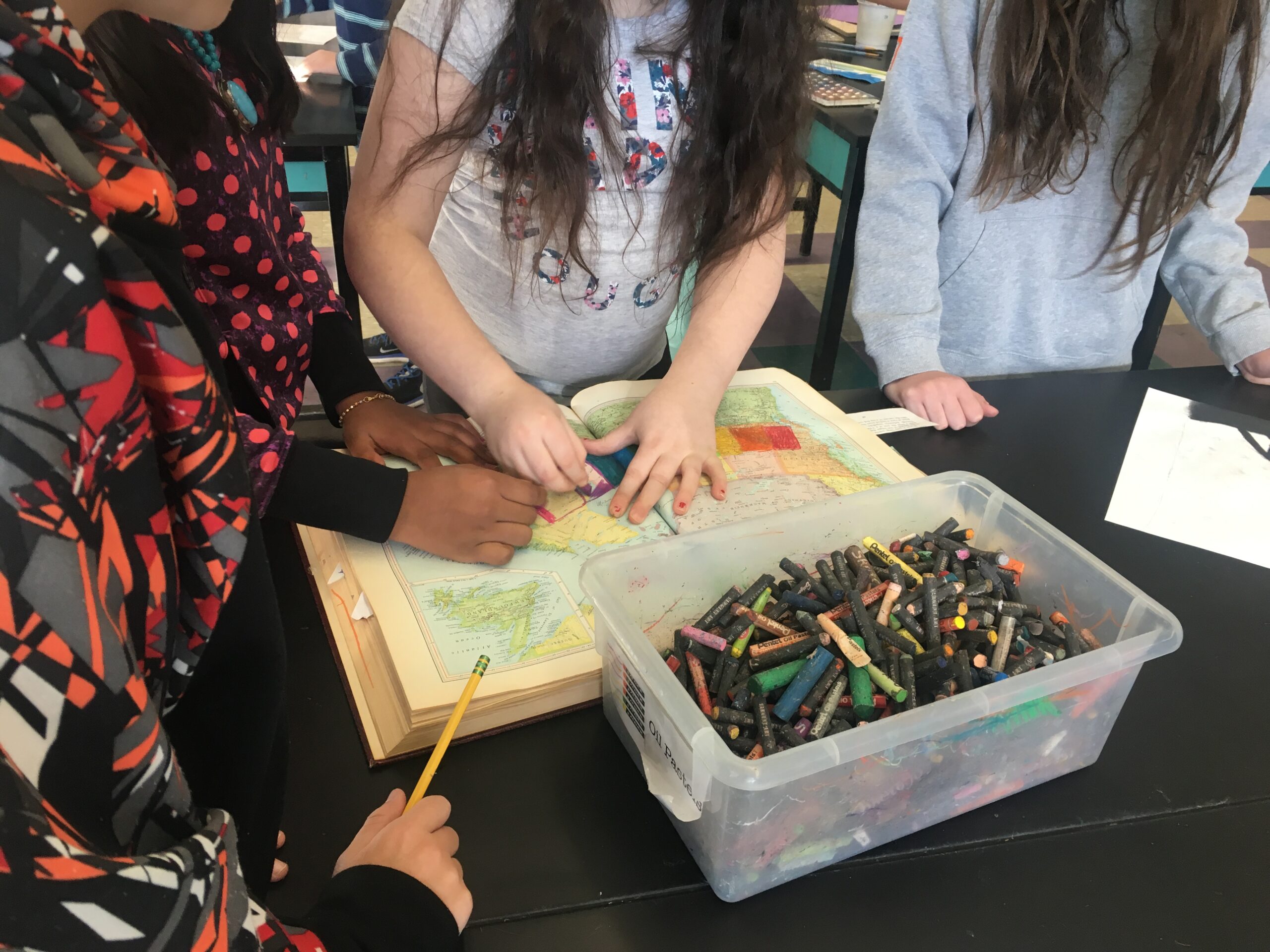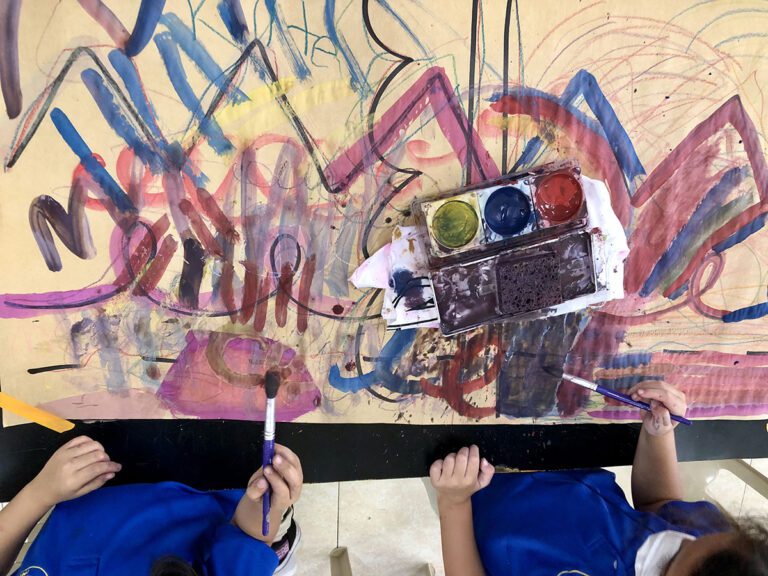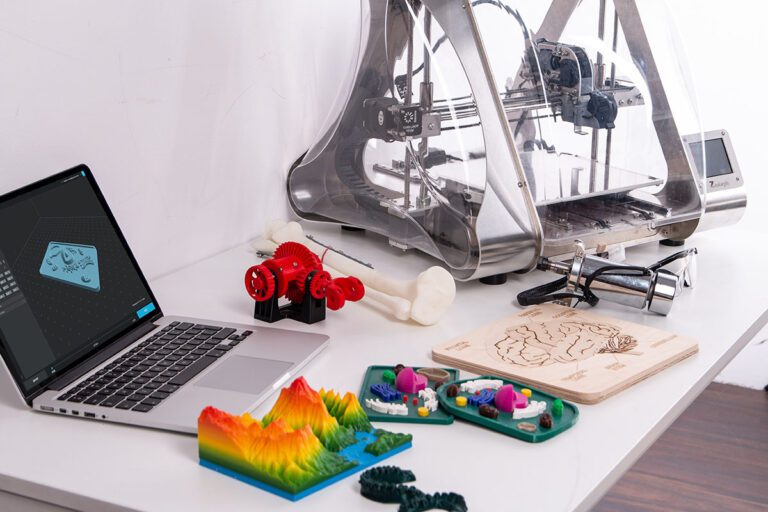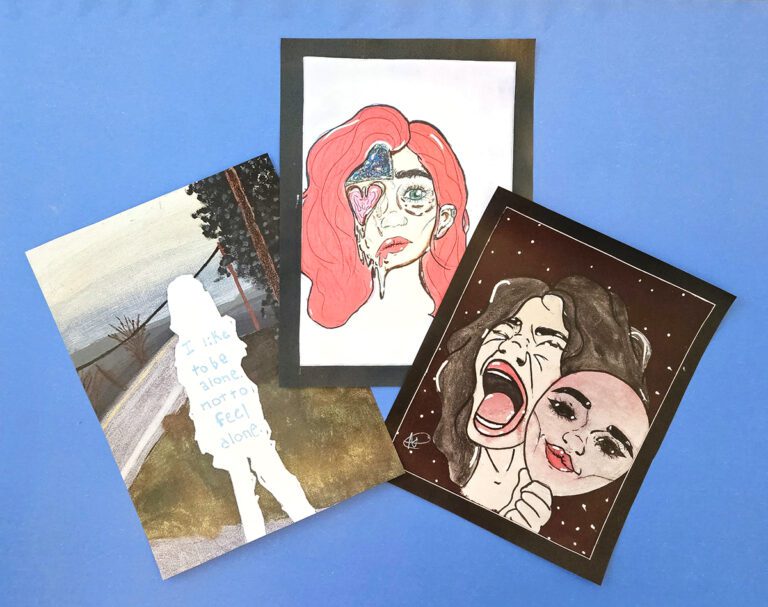Art teachers are unique. We teach hundreds of kids each week separated into dozens of classes. So how on earth do you build a whole school collaborative community where kids feel connected to the other students in the school? Let them collaborate across classes!
Here are some easy collaborative projects I have implemented in my choice classroom to create those connections.
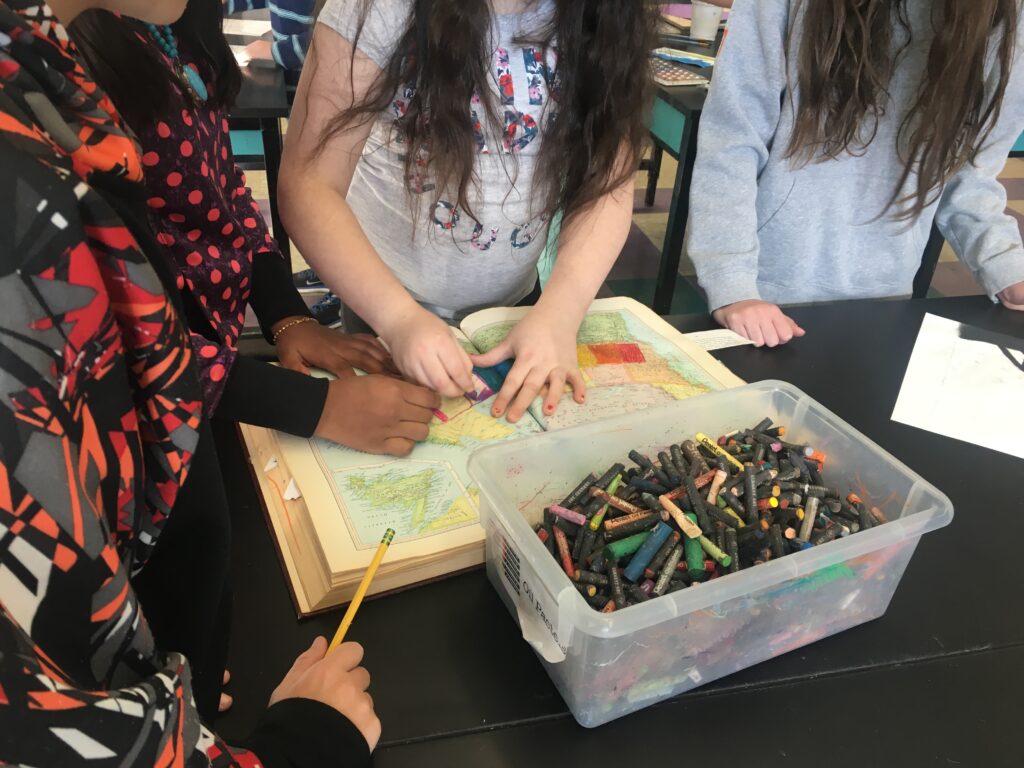
The Community Painting
It’s fun and freeing for students to paint on a really large canvas, but my budget doesn’t allow me to buy one for each student. Thus, the community painting was born. In the corner of my painting center, I have two easels with 20″ x 36” canvases perched on top. During each class, a few students can sign up for community painting time where they can experiment with working on a large scale.
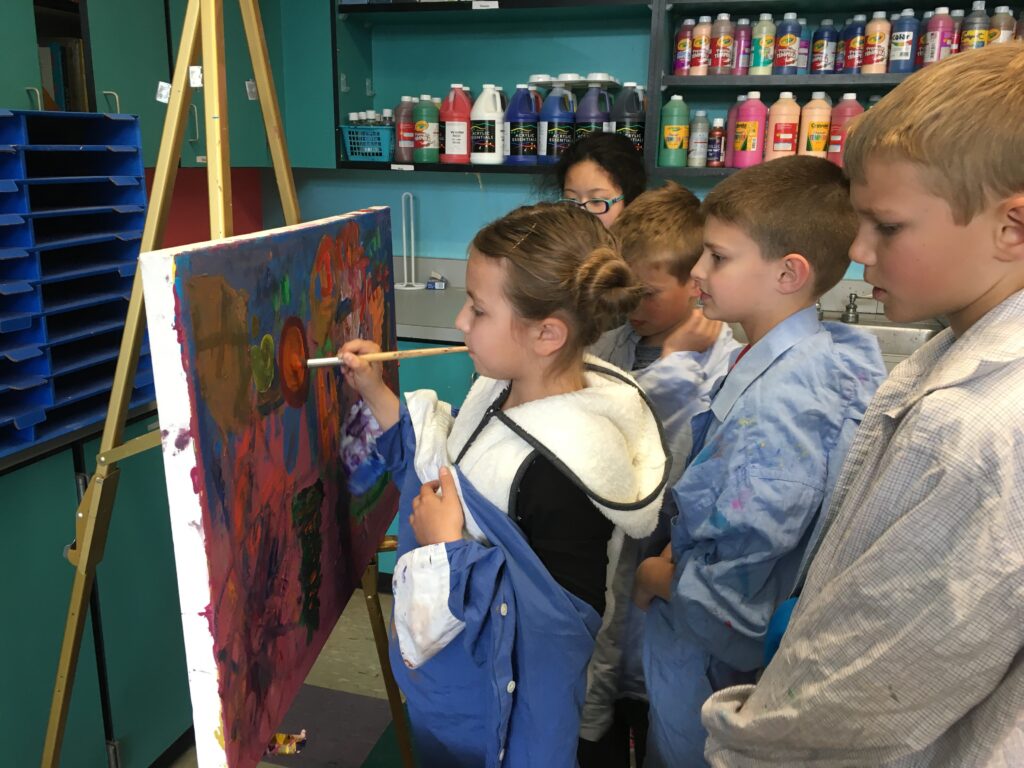
Under the easel, I’ve placed a large drop cloth to collect drip. To add to the experience, the center includes a Bob Ross style palette for mixing and long easel brushes. Start by introducing it to your oldest kids, allowing for a few students to work at a time and begin to expand it as you figure out what works best for your classroom.
Altered Book
The library at my school discards atlases and large books from time to time. In the collage center, I’ve displayed a couple large colorful books and some decoupage glue. Students can use all the materials in the collage center to alter the pages of the book. They are free to draw, paint, glue, cut, fold, etc. in ways that change the book into an art piece.
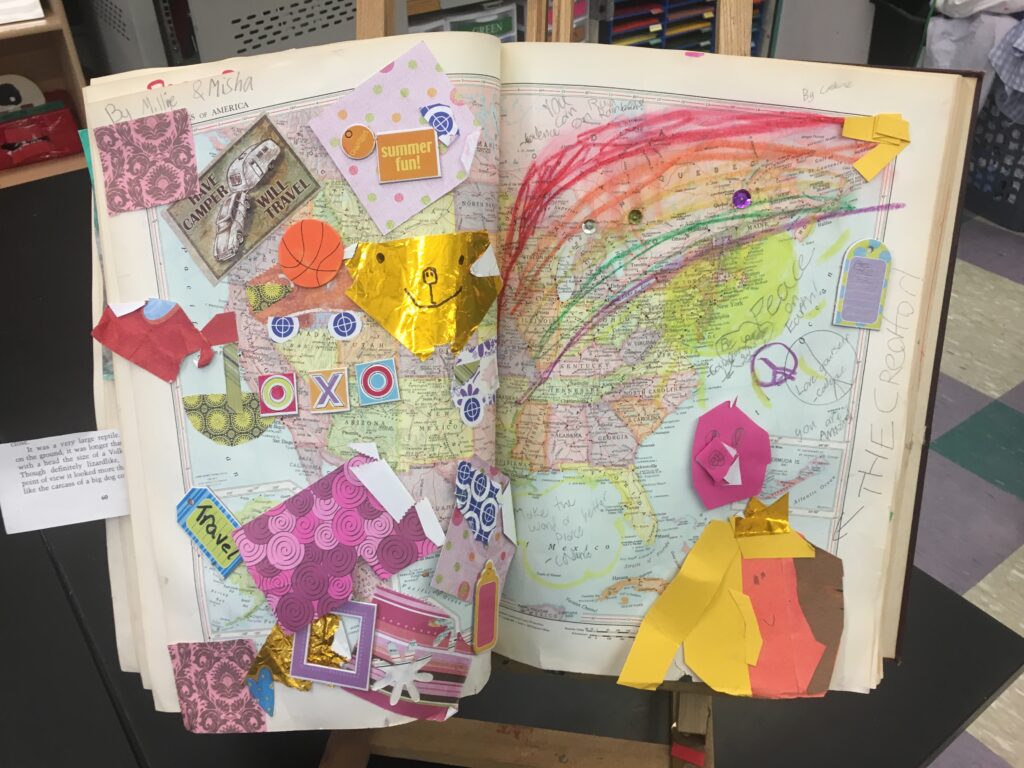
This piece is great for students who have “blank page” syndrome and just can’t start drawing on an empty paper. Just remember to have a few books at a time so you can leave them open to dry properly.
Large Scale Drawing
In the drawing center, it can be fun to set up a huge piece of paper for students to add their own drawings. It can be interesting to teach students about how their art can interact with the art of others. Working on a large scale and in collaboration with their classmates can relieve the blank page pressure some kids feel.
This work may take some time to develop, and it’s okay for kids to be silly and playful in this type of art. Try and treat this as a planning space, where kids can work through ideas without the pressure of completing an independent piece.
Before jumping in, be sure to set up some ground rules:
- Respect others artwork
- Remember your artwork is not permanent
- Keep it expressive: Try to only use symbols and words that add to the theme of your artwork, such as poetry.
- No weapons or violence
- Clean up!
Collaboration is a huge part of the new face of education and STEM learning, and we should be a part of that development. Students need to be able to work alongside people across the globe they may never meet. The art room is the perfect place to teach collaboration, shared responsibility, and respect for the work of others.
What types of collaborative projects do you use in your classroom?
Would you try whole school collaboration? Why or why not?
Magazine articles and podcasts are opinions of professional education contributors and do not necessarily represent the position of the Art of Education University (AOEU) or its academic offerings. Contributors use terms in the way they are most often talked about in the scope of their educational experiences.
